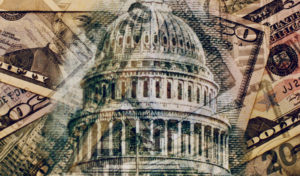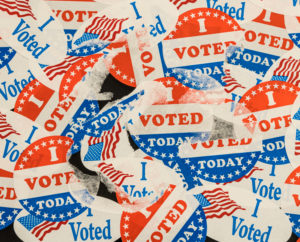
Contribution limits are no longer justified in the age of social media, scholar argues.
President Donald Trump’s unprecedented use of social media platforms during the 2016 U.S. presidential election marked a turning point in election campaigning.
Then-candidate Trump tweeted campaign messages to over 10 million voters at a time, practically for free. The emphasis that President Trump placed on social media during the campaign made it clear that the Federal Election Campaign Act (FECA)—which Congress created before the existence of social media—has become outdated, according to a recent paper by Anthony J. Gaughan of Drake University Law School.
FECA is made up of four pillars: contribution limits for individuals, disclosure laws, a ban on foreign contributions, and the Federal Election Commission. Although few of these pillars function properly, the advent of social media has made the contribution limit pillar especially archaic, argues Gaughan. He proposes that Congress simply eliminate contribution limits from federal campaign finance law.
Contribution limits have become obsolete in the age of the Internet and social media because technology puts at a disadvantage candidates who are not well-known celebrities, explains Gaughan.
Due to the free publicity President Trump acquired through social media, he only had to spend about five dollars per vote, whereas Jeb Bush had to spend almost 500 dollars per vote in the Republican primaries—and Jeb Bush was still better known than the average candidate.
Gaughan contends that candidates from more ordinary means have to spend all their time fundraising to obtain the name recognition that celebrity candidates get for free and that extremely wealthy candidates can pay for on their own. Their time spent fundraising greatly detracts from their ability to spend time talking about the issues.
Gaughan acknowledges concerns that allowing unlimited contributions would allow too much money into elections. FECA, however, does not prevent large donors from contributing millions of dollars to candidates, he says. It only prescribes the methods through which they can contribute. Gaughan observes that donors currently just place millions of dollars in Super Political Action Committees (Super PACs), where their names are not disclosed.
Gaughan would welcome large donors contributing directly to a candidate as opposed to Super PACs, because any contribution over $200 to a federal candidate must be disclosed. This disclosure would at least allow voters to monitor donations and evaluate whether a candidate has been compromised by a donor’s contribution. Accordingly, Gaughan predicts that Super PACs would largely disappear if Congress eliminated contribution limits since Super PACs mainly exist as a tool to accept unlimited contributions.
Gaughan acknowledges that voters would likely not welcome an elimination of contribution limits. Polls show that voters “consistently lament the outsized role of money in politics.” Even if Congress cannot eliminate contribution limits, Gaughan contends that substantially raising the limit would be a more feasible and still-helpful alternative.
President Barack Obama proved that substantially raising the limit significantly helps during his campaign for U.S. Senate. When he was beginning his political career, Obama benefitted immensely from the Bipartisan Campaign Reform Act’s “Millionaires’ Amendment.” This amendment raised the contribution limit drastically for candidates who faced millionaire, self-funded opponents. President Obama—who was running against a wealthy businessman who spent $29 million of his own money—raised over $2 million in that election because of the higher contribution limits permitted, and he won a U.S. Senate seat at a time when he was still relatively unknown.
Gaughan also proposes that Congress vary contribution limits depending on the number of people in each state. He points out that FECA provides the same relatively small contribution limits for donors contributing to any federal election—presidential, U.S. Senate, and U.S House of Representatives—even though each election involves a drastically different number of people. As a result, candidates’ advertising costs differ significantly from state to state.
Gaughan also notes that FECA’s contribution limits are considerably lower than most state election contribution limits. Individual donors can contribute up to $11,000 to New York State Senate candidates, compared to $2,700 in federal campaigns. Many other states, including Texas, Pennsylvania, and Virginia, do not impose any contribution limits for state elections.
Gaughan concludes that it is time to level the playing field for candidates and make elections about the issues, not just fundraising. Congress should follow many of the states’ leads and “eliminate—or at least substantially raise”—contribution limits, he argues.



